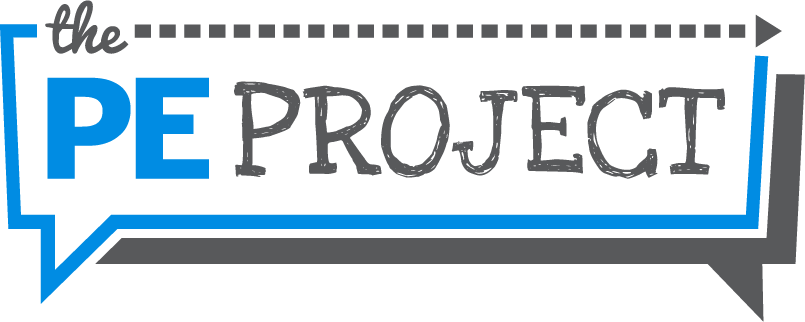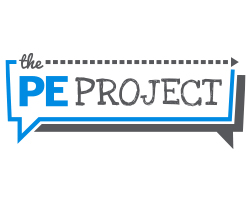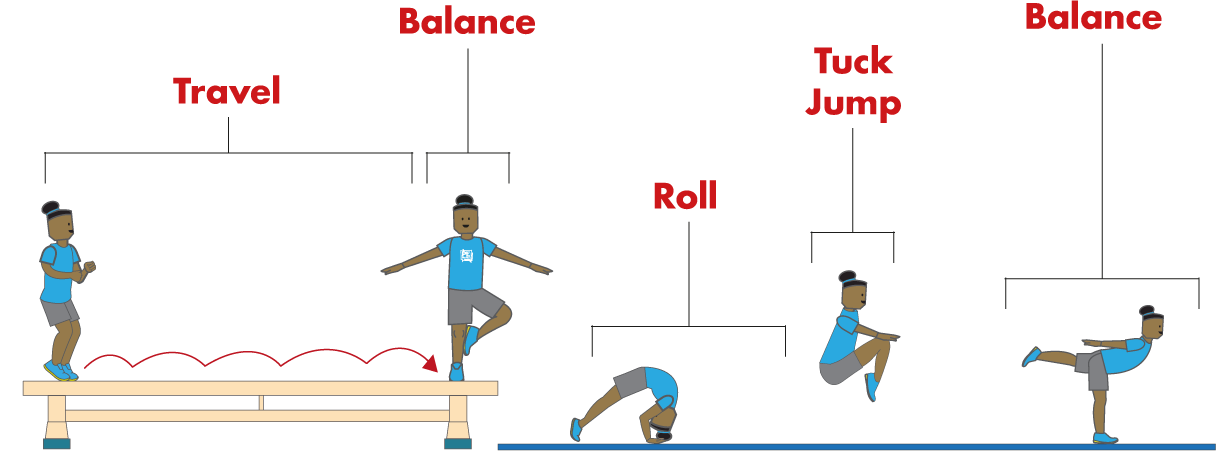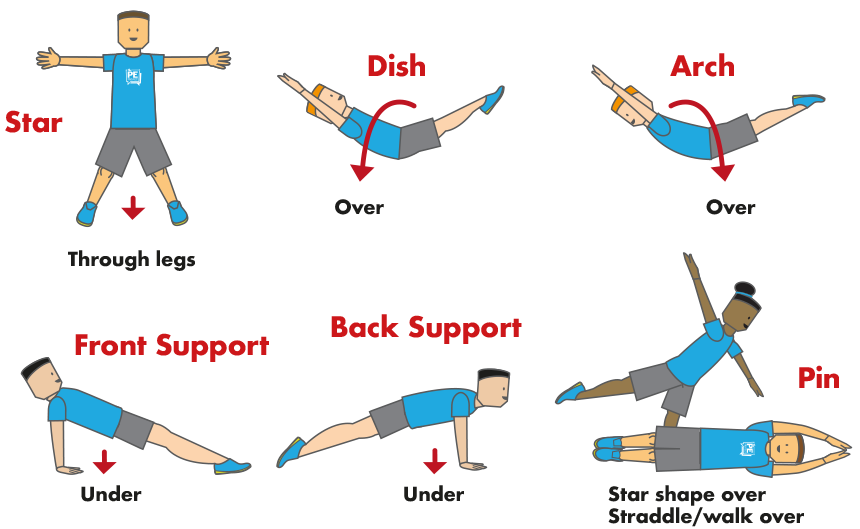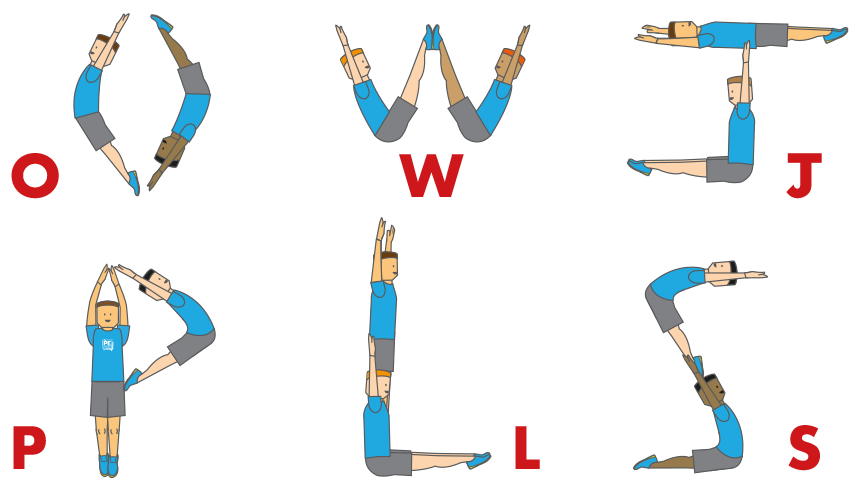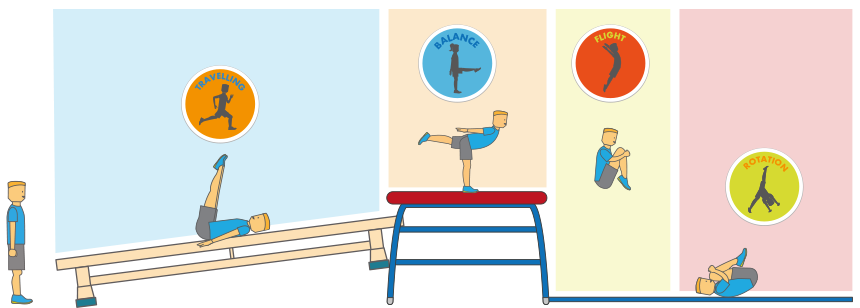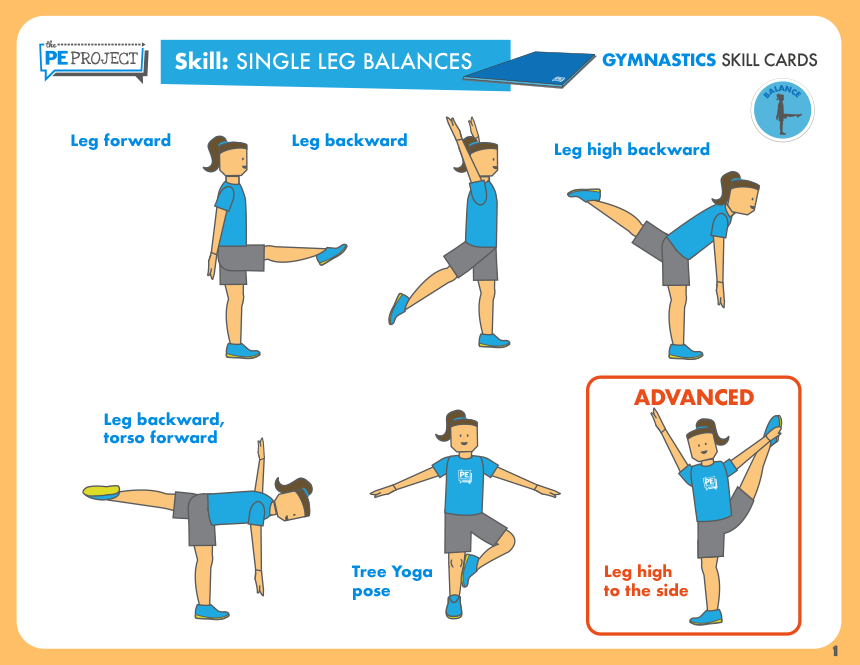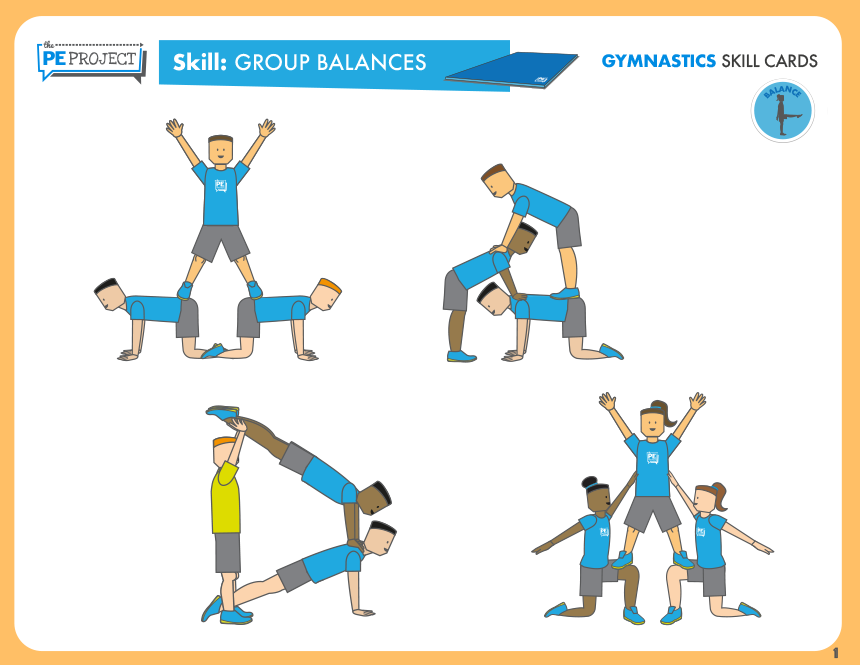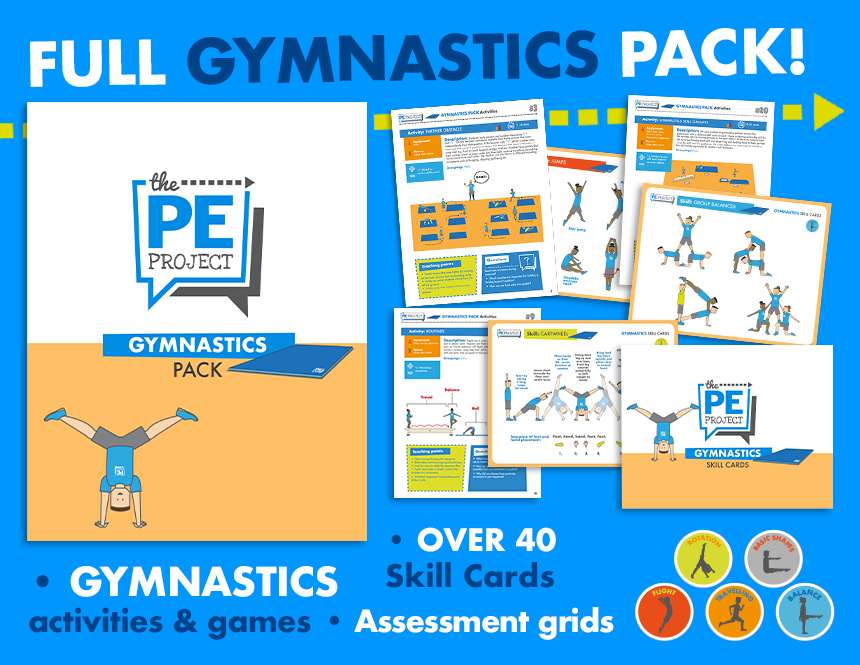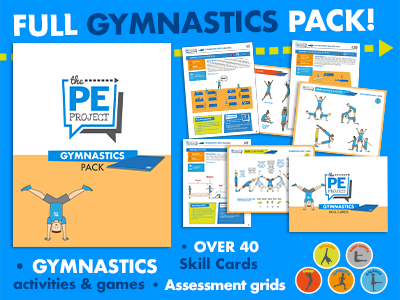When teaching Gymnastics in Physical Education lessons, it is helpful to have a range of activities, teaching models and styles in the toolbox to help ensure students make great progress. Gymnastics lessons can be delivered in a range of ways depending upon the age, group size, resources available and your level of experience.
If teaching lower Elementary (Primary/KS1) you may want to opt for a range of simple warm-up activities that emphasize developing knowledge of basic shapes and positions before moving into basic exploratory activities with apparatus (see ‘Routines’ activity below), e.g., “Who can show me 5 creative ways of travelling along the bench?”. For upper Elementary (Primary/KS2) students can explore creating gymnastics sequences starting with mats only, then gradually including more and more apparatus each week. For Middle-School students you may want to challenge students to refine their gymnastics techniques and to create sequences with a partner could include: an individual balance – a roll – a jump – a travelling movement – and a group balance.
Below are a few Gymnastics activities, an example skill card and lesson plan from our ‘Full Gymnastics Pack’ that you can use in your lessons.
Description: Pupils are in pairs or groups of three and are assigned a mat or station each. Teacher sets them a challenge to create a simple routine, such as “travel, balance, roll, flight, balance”. Pupils work with their groups to create a routine, using their best skill in each movement. Pupils can initially start with just mats, then progress to having a bench, then a table etc.
Teaching Points
- Take turns performing the sequence
- Share ideas and encourage good technique
- Look for ways to make the sequence flow
- Pupils must make a simple routine that includes three balances and movements to get into and out of balances
- Individual sequence incorporating each of the 3 rolls
Questions
- What movements can you use to create this sequence?
- How can you move smoothly from one movement to another?
- Why did you choose those particular movement in your sequence?
Description: Classic game of tag – select 3-5 taggers which will be wearing pinnies. The rest of the class must try and avoid being tagged. If tagged students have to adopt the pre-chosen gymnastics shape/position which was discussed before the game begin. For example, a star shape, front support, dish position, tuck etc. Pupils must also know how to set the person free i.e., can they crawl under, jump over, run around twice etc. Play each round for 2-3 minutes, and introduce different shapes and balances. Alternatively, each tagger can represent a different shape e.g., if tagged by the blue tagger then a star shape must be held, red tagger equals a back support position.
Teaching Points
- Run lightly on the balls of your feet
- Maintain a strong, neutral spine
- Watch out for others when rescuing a tagged player
Questions
- What position must you hold when tagged? What should it look like?
- How can you avoid being tagged?
- Why is body tension important when making shapes?
Description: Pupils listen carefully to the teacher’s commands. On “go” they run around the room on the balls of their feet. When the teacher calls a letter i.e., “Show me the letter ‘B’”, pupils will lie on the floor (or on nearest available mat) and position their body to make that particular letter. Challenge them to make the letter quickly (e.g., 10 seconds or less). To progress, have pupils work in pairs or groups of 3, playing the same game.
Top Tip:Use this game to link to one of your learning objectives e.g., by spelling ‘tension’ or ‘cartwheel’ etc.
Teaching Points
- Run around on balls of feet
- Respond quickly to the teacher’s commands
- Demonstrate good body control and tension
Questions
- How difficult was it to make a shape in such a short amount of time?
- What did you feel when you were unable to make the shape in time?
- Which characteristics are important for being resilient?
Description: Pupils work in pairs and have a matted area each. Set students a challenge of producing a gymnastics sequence or routine e.g., Balance – Rotation – Flight – Travel – Balance (write this on a board, or provide on a piece of paper). Students can either create the same routine or have different ones. Either way, students help each other and share ideas. They should be encouraged to demonstrate their best/most difficult skill for each. Similar to the exploration challenges activity, use the four stages: 1) Explore 2) Share 3) Refine 4) Showcase.
Start off by setting students the challenge with only a mat each. As they progress, add apparatus (one at time) to their station, as they develop and refine their routine. This is a great way to get pupils focused on completing tasks to a high-level and staying focused. You can let students know that those that are on-task and working the hardest will have first-choice of which piece of apparatus they would like to use.
Teaching Points
- Demonstrate good posture, strong shapes and body tension
- Flow smoothly from one move to the next
- Use both high and low levels to make performance interesting
Questions
- Why is it important to flow seamlessly from one move to the next?
- What can you include in your routine to make it interesting for the observer?
- How is body tension used to show control in your/partner’s routine?
Skill Cards: When teaching Gymnastics it can be extremely useful for students to use skill cards to deepen their understanding of both simple and complex skills. For example, when trying to teach students how to perform single-leg or group balances they could use the above skill cards to explore the balances on their own or in small groups. This is an example of a 'Reciprocal Teaching Style' which you can learn more about in our 'Teaching Styles' article.
The Full Gymnastics Pack
Would you like more Gymnastics activities? Download the Full Gymnastics Pack for a great range of Gymnastics activities that are appropriate for using in PE lessons. Our pack will help you deliver high-quality Gymnastics lessons for Phys Ed! It has been developed by highly-qualified and experienced PE teachers for specialists and non-specialists alike who want to deliver the best Gymnastics lessons where students can make exceptional progress.
In the Full Gymnastics Pack by the PE Project you will find:
- Gymnastics activities
- Skill Cards
- Lesson Plans
- Assessment Criteria for Elementary and Middle-School
- Non-doer sheets
- Plus lots of additional extras like questions, teaching recommendations, differentiation strategies.
